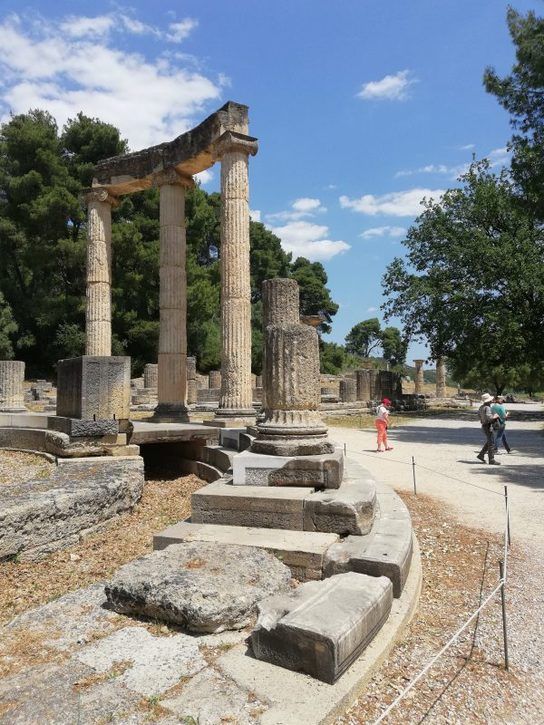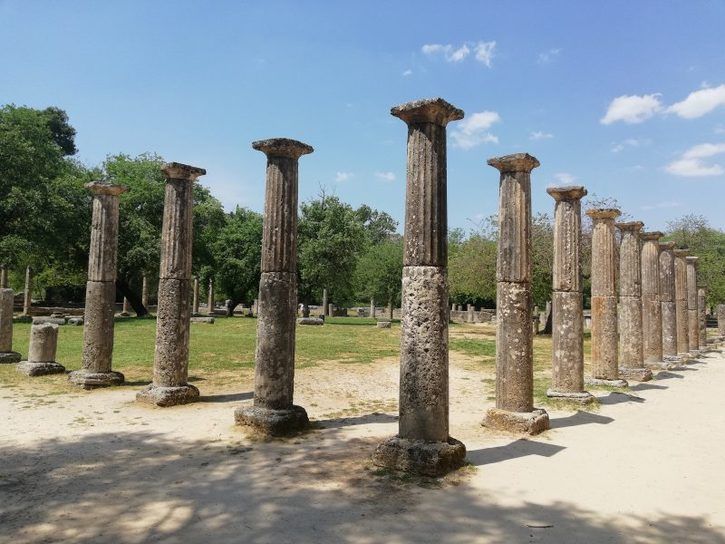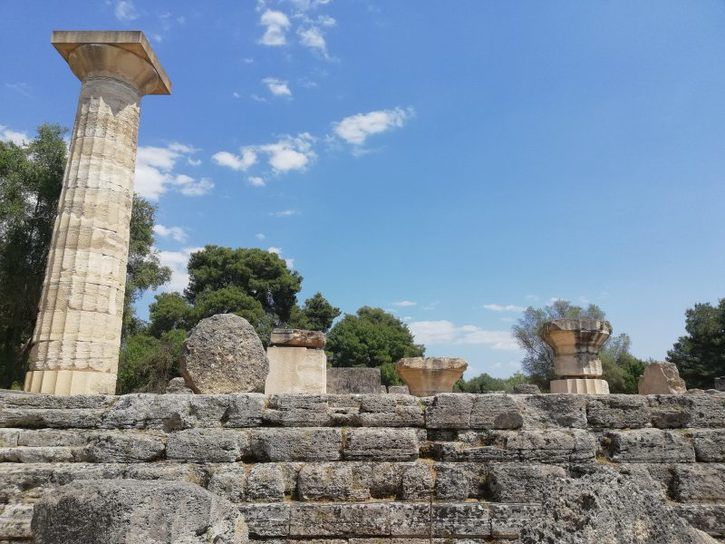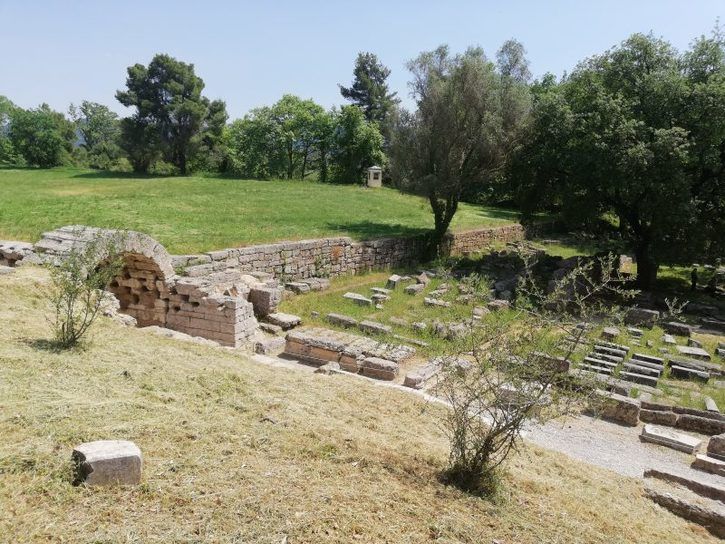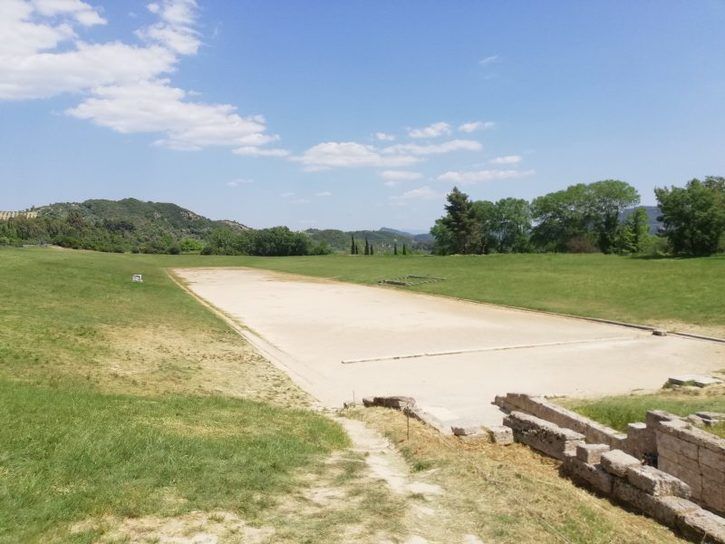After spending the night in a parking place at the side of the road, we drove on to Olympia which, in my ignorance, I confused with Mount Olympus and expected to see a soaring snow-capped peak. It turned out to be a rather modest hill, but the three main sites were well worth visiting.
The first Temple of Zeus was built about 1,300 BC and it is certain that games of some sort have taken place since that date. The first officially recognised Panhellenic games took place in 776 BC and consisted of boxing, wrestling, running and the Pankration which was considered the most dangerous because any means could be used to defeat an opponent apart from biting and eye-gouging, although this was permitted in the games at Sparta. The games expanded substantially in the 5th century BC in honour of Herakles when games involving animals were introduced. The games were banned by the Christian Roman emperor Theodosius in 393 AD. The Museum of the Olympic Games gives a fascinating account of how the Games were organised.
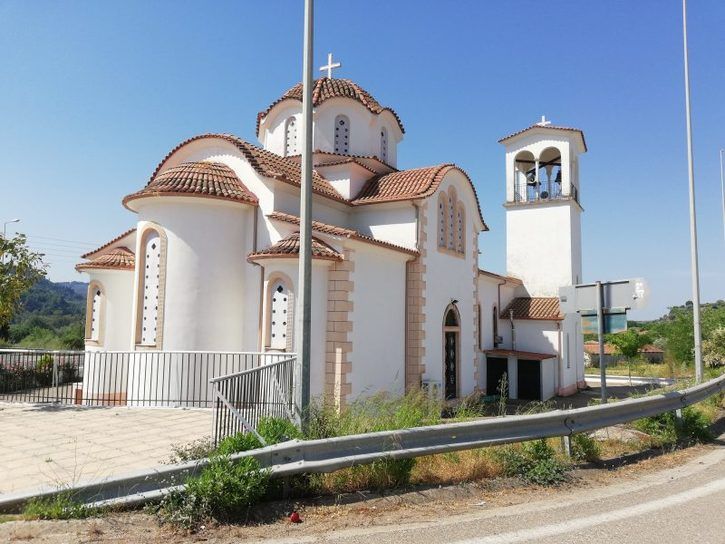
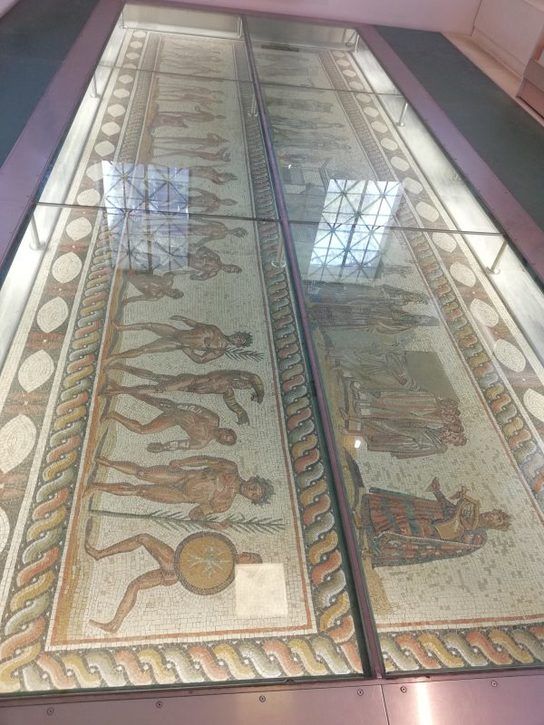
The Archaeological Museum is far grander than those of Corinth, Thebes (our favourite) and Delphi and it contains some dramatic exhibits including statues of Antonous (Hadrian’s bloke), Hermes of Praxiteles (340 BC), Zeus and Ganymede, Nike and others. Incredibly, both pediments have survived almost intact from the Temple of Zeus. The western one shows the battle between the Lapiths and the centaurs. The centaurs, invited to the wedding of the Lapith king, tried to abduct his bride and were duffed up for their insolence.
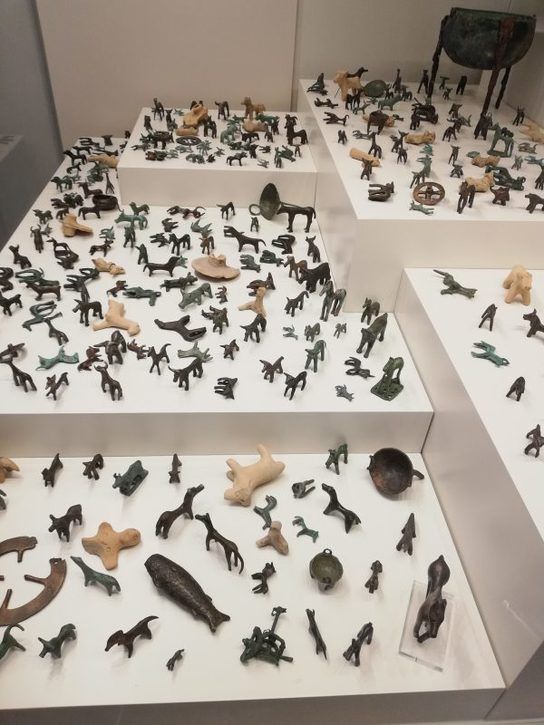
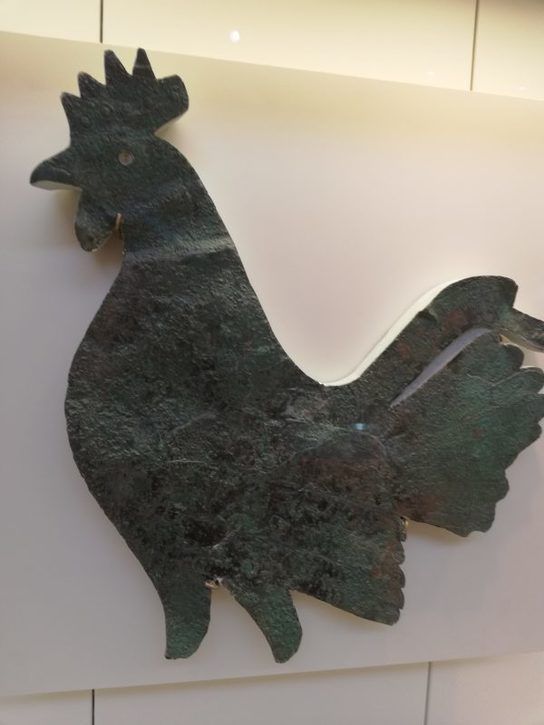
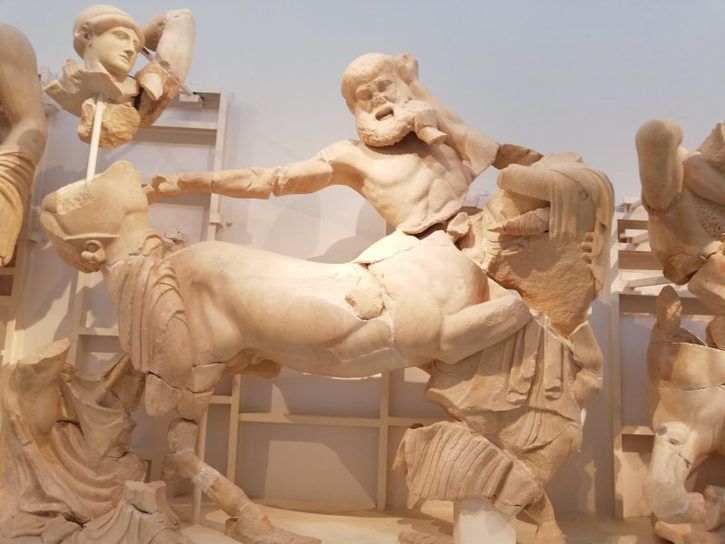
The archaeological site is huge and includes the ruins of the Temple of Zeus, the Nymphaeon (2nd century AD), the Treasuries, the Metroon, the Pelaestra, the Phillipeon, the Temple of Hera and the stadium with an arched entrance.
We then drove back in the direction of Athens and slept at a motorway service station.
